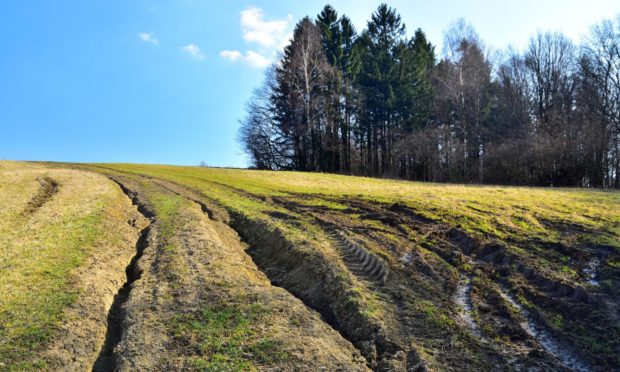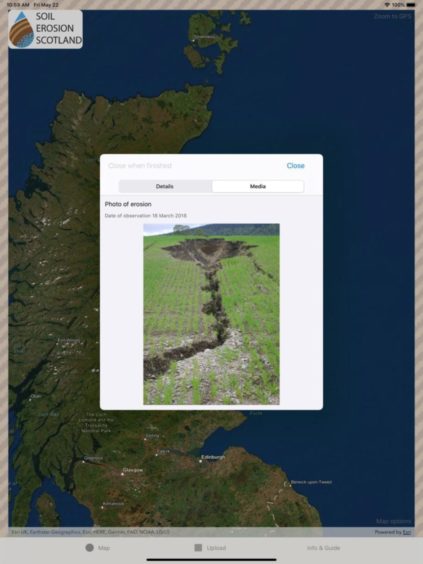A new app has been created to help farmers and scientists understand the scale of soil erosion in Scotland.
It will also help users identify the different types of soil erosion and allow them to contribute records and images which can be shared with other users.
Dr Allan Lilly, a soil scientist at the James Hutton Institute (JHI) and one of the researchers behind the app, explained that erosion occurs when soil particles break off from the soil surface and are moved across the land either by flowing water or by the wind.
“We find erosion occurring across the country, in both the uplands and the lowlands. Footpath erosion can also occur in localised areas,” he said.
“The most obvious effect of soil erosion is the loss of soil. You may have seen soil washed out of fields and onto roads or into rivers and streams.
“This is not just bad for farming through the loss of soil and nutrients but the nutrients in the eroded soil can pollute our rivers and the soil particles themselves can smother the riverbeds, damaging breeding grounds for fish. Erosion of peat soils can also cause water pollution but also release the greenhouse gas, carbon dioxide, into the air.”
Records
Data on Scotland’s soils and landscape, acquired over many years, is already held by JHI and has been used to develop a model and maps of the risk of erosion happening.
App users will be asked to answer some questions to improve the understanding of where, when and why erosion occurs and help find ways to reduce its harmful effects. Users will be able to upload their records and photos whenever they find evidence of the problem.
Dr Lilly said: “We are keen to hear from land managers, members of the public and other agencies if you think the soil erosion recording app is useful in helping to reduce soil erosion and if you are likely to use it. We are also interested in what disadvantages you see in having this app and website available to everyone. Please send responses to jhiapps@hutton.ac.uk ”
The Soil Erosion Scotland app is available for iOS and Android devices and is free to download and use. To download it visit the App Store at http://bit.ly/SoilErosion-iOS or Google Play store http://bit.ly/SoilErosion-Android.

